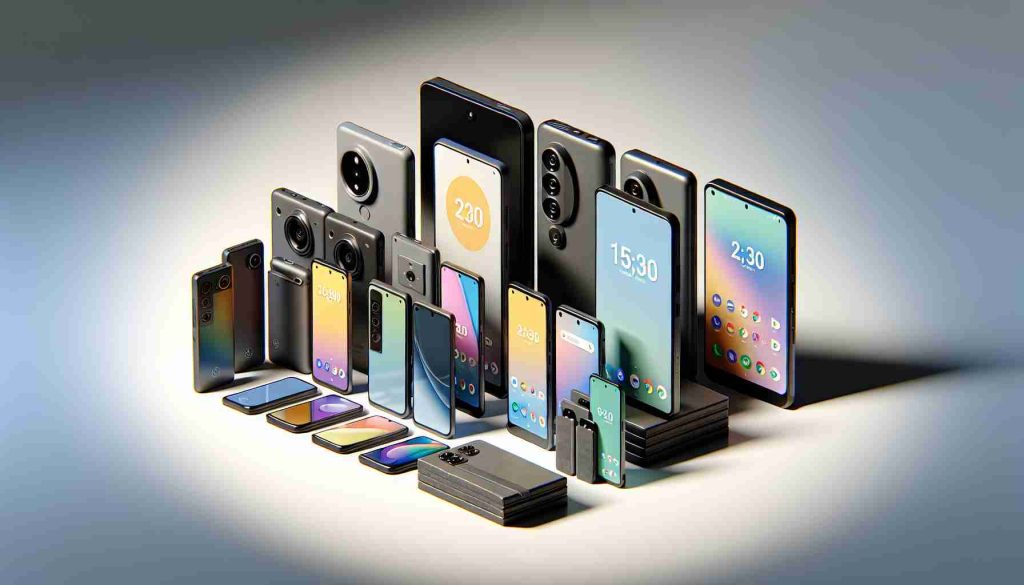Gone are the days of ordinary smartphones as the era of triple-fold phones is on the horizon. Leading brands such as Huawei, Xiaomi, Oppo, Tecno, and Samsung are ramping up their efforts in this field, with the anticipation of introducing new triple-fold models to consumers by 2025.
The evolution of foldable phone technology dates back to 2011 when Kyocera introduced one of the first touch-screen foldable phones. Fast forward to 2018, Royole’s FlexPai marked the entry of dual-fold phones, followed by Samsung’s Galaxy Fold in 2019. With Samsung spearheading the dual-fold market, Huawei emerged as a strong contender with its Mate X model. This sparked a wave of innovation, with brands like Xiaomi, LG, Oppo, Motorola, and TCL joining the foldable phone race. Now, the trend is shifting towards triple-fold phones.
Chinese firms are taking the lead in the realm of triple-fold phones. Despite losing its dual-fold dominance to Samsung, Huawei is gearing up with the upcoming launch of its Nova 13 series smartphones and Watch GT 5 series smartwatches in September. Meanwhile, TCL, Xiaomi, Oppo, and Tecno are actively developing their triple-fold phone offerings. Even Samsung, a pioneer in foldable technology, has secured a patent for triple-fold phones, hinting at a revolutionary shift by 2025.
These triple-fold phones are set to revolutionize the way we use our devices. Imagine transforming your phone into a mini laptop – the lower layer becoming a keyboard while the upper layer serves as the display. Additionally, the ‘tent’ mode offers an ideal environment for collaborative work. With multi-window mode, running multiple applications simultaneously becomes effortless.
The Future of Foldable Phones: Unveiling Lesser-Known Realities
In the realm of foldable phones, while the emphasis has been on the convenience and futuristic design, there are intriguing questions that arise, paving the way for a deeper understanding of this emerging technology.
Key Questions:
1. How durable are triple-fold phones compared to their dual-fold counterparts?
2. What advancements in software are necessary to fully utilize the potential of foldable displays?
3. How does the cost of manufacturing triple-fold phones impact their market accessibility?
4. Will app developers need to adapt their applications to suit the diverse form factors of foldable phones?
Challenges and Controversies:
– Durability vs. Flexibility: The more folds a device has, the greater the risk of wear and tear. Balancing durability with the need for flexibility in triple-fold phones presents a significant engineering challenge.
– Software Optimization: While the hardware innovation is impressive, software must also evolve to leverage the unique capabilities of foldable displays. Seamless transitions between different folding configurations require sophisticated coding.
– Cost Barrier: Manufacturing intricate foldable displays escalates production costs, potentially hindering widespread adoption due to higher retail prices.
– App Adaptation: Ensuring a seamless user experience across various folding modes demands that app developers tailor their software to accommodate the changing screen layouts of foldable phones.
Advantages and Disadvantages:
– Advantages: Triple-fold phones offer unparalleled versatility, transforming into various form factors to suit different tasks. Enhanced multitasking capabilities and productivity with multiple windows open simultaneously are distinct advantages.
– Disadvantages: Potential drawbacks include increased fragility with more folding components, the challenge of developing robust software ecosystems, higher costs associated with cutting-edge technology, and the necessity for app developers to adapt to novel form factors.
For those seeking more information on the latest developments in foldable phone technology, Samsung’s official website provides insights into current trends and upcoming innovations in the field. Explore further to stay informed about the unfolding revolution of foldable phones.























